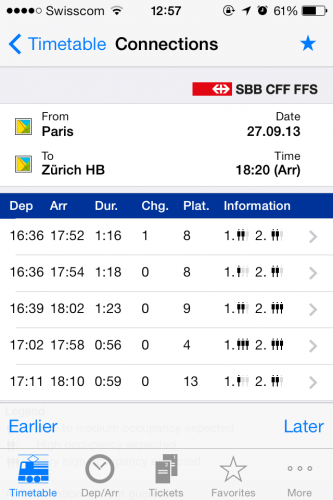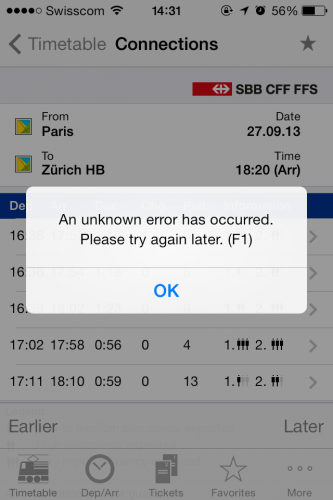30 September 2013, 19:44
The first law of branching is: don’t. There is no other law.
The only sane way to develop software in a group, whether collocated or distributed, is to have a single branch (“trunk”) to which everyone commits changes, with constant running of the regression test suite to make sure that any breaking change is detected and corrected right away.
To allow branching, that is to say the emergence of separate lines of development with the expectation that they will be merged back later on, is to guarantee disaster. It is easy to diverge, but hard to converge; not only hard, but unpredictable. It can take days, weeks or more to reconcile changes and resolve conflicts, when the reason for the changes is no longer fresh in the developers’ memories, and the developers themselves may even no longer be there. Conflicts should be detected right away, and corrected immediately.
The EiffelStudio development never uses branches. A related development, EVE (Eiffel Verification Environment), maintained at ETH, includes all research tools, and is reconciled every Friday with the EiffelStudio trunk, so it is never allowed to diverge into a separate branch. Most other successful teams I know apply the first law of branching too. Solve conflicts before they have had the time to become conflicts.
VN:F [1.9.10_1130]
Rating: 5.1/10 (28 votes cast)
VN:F [1.9.10_1130]
Rating: -10 (from 20 votes)
28 September 2013, 18:07
Yesterday, wanting to find out the platform of an arriving train (stations are good at displaying departures, but don’t seem to consider arrival information worth showing), I fired up the “SBB Business” mobile application of the Swiss railways which I purchased some time ago:

The results are impressive: one can, they tell us, ride from Paris to Zurich — about 500 kilometers or 300 miles — in 56 minutes by leaving at 17:02. Wow! No wonder the entry displays (on the right) the graphical symbol for the highest possible expected passenger load, in both first and second class. With such a speed I would flock to that train too!
Nonsense of course. The TGV is fast, at least in the French part (from Basel to Zurich they seem to make it as slow as possible to prove some point), but it still takes four hours and three minutes. I have no idea where the program got the information it displays.
Trying to tap the “earlier” or “later” buttons does not help much, since what you get (consistently repeated if you keep trying, and confirmed again one day later) is this screen:

No clue what “F1” means.
Whatever software solutions the SBB uses, I am not impressed. Of course, they are welcome to ask for my suggestions.
VN:F [1.9.10_1130]
Rating: 7.5/10 (8 votes cast)
VN:F [1.9.10_1130]
Rating: +3 (from 5 votes)


 Informatics Europe
Informatics Europe LASER summer school
LASER summer school Propulsion Academy
Propulsion Academy